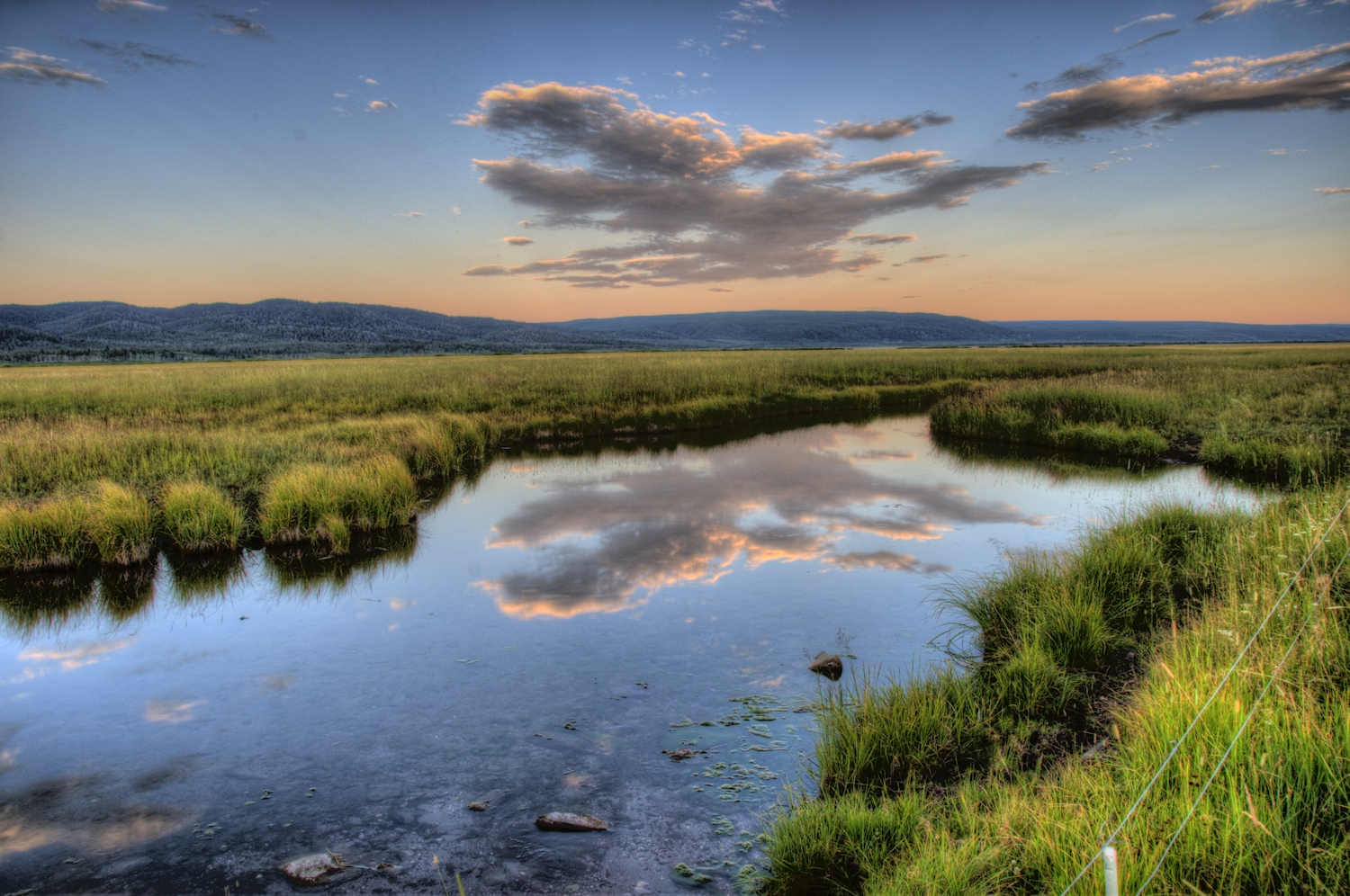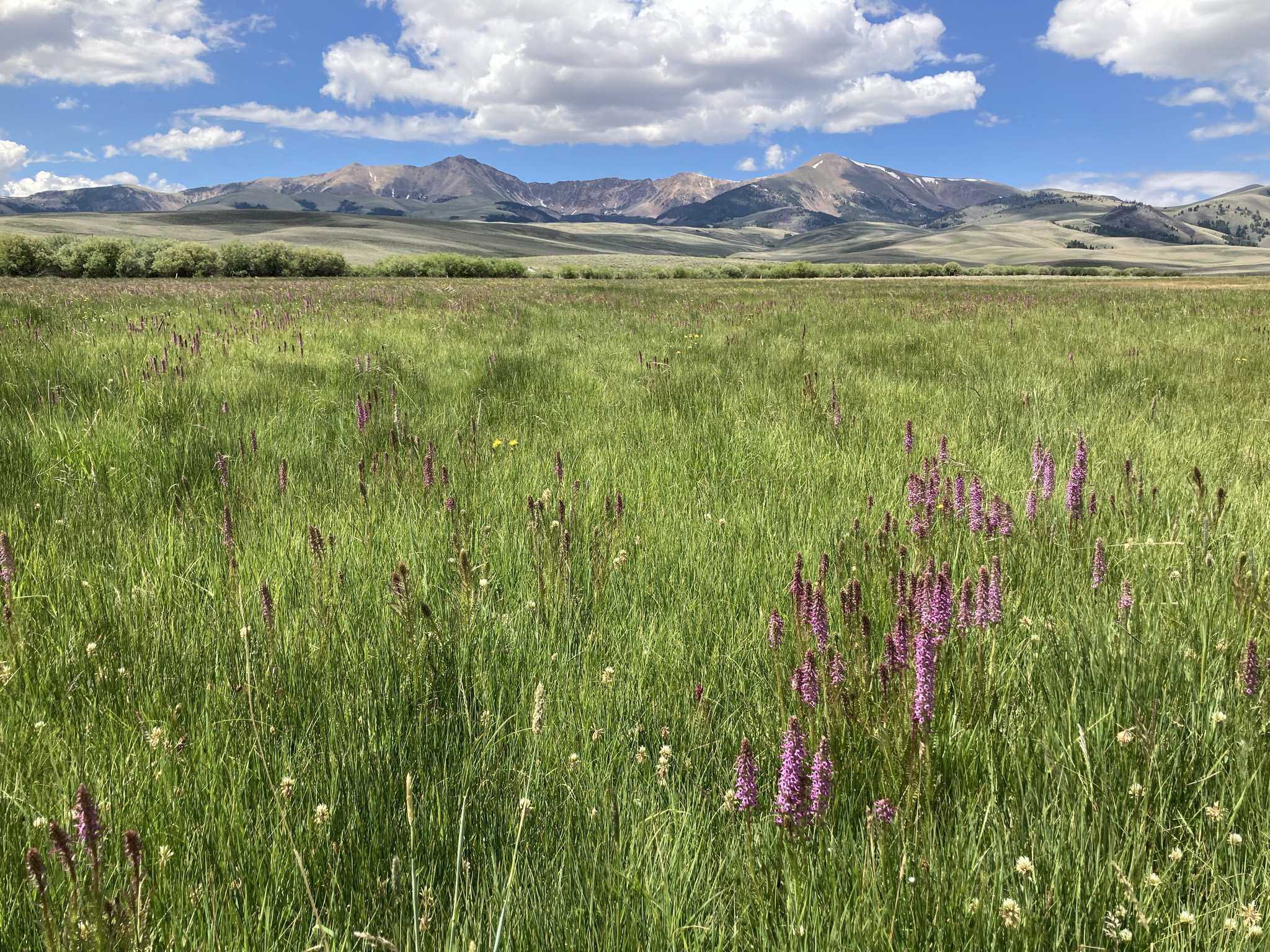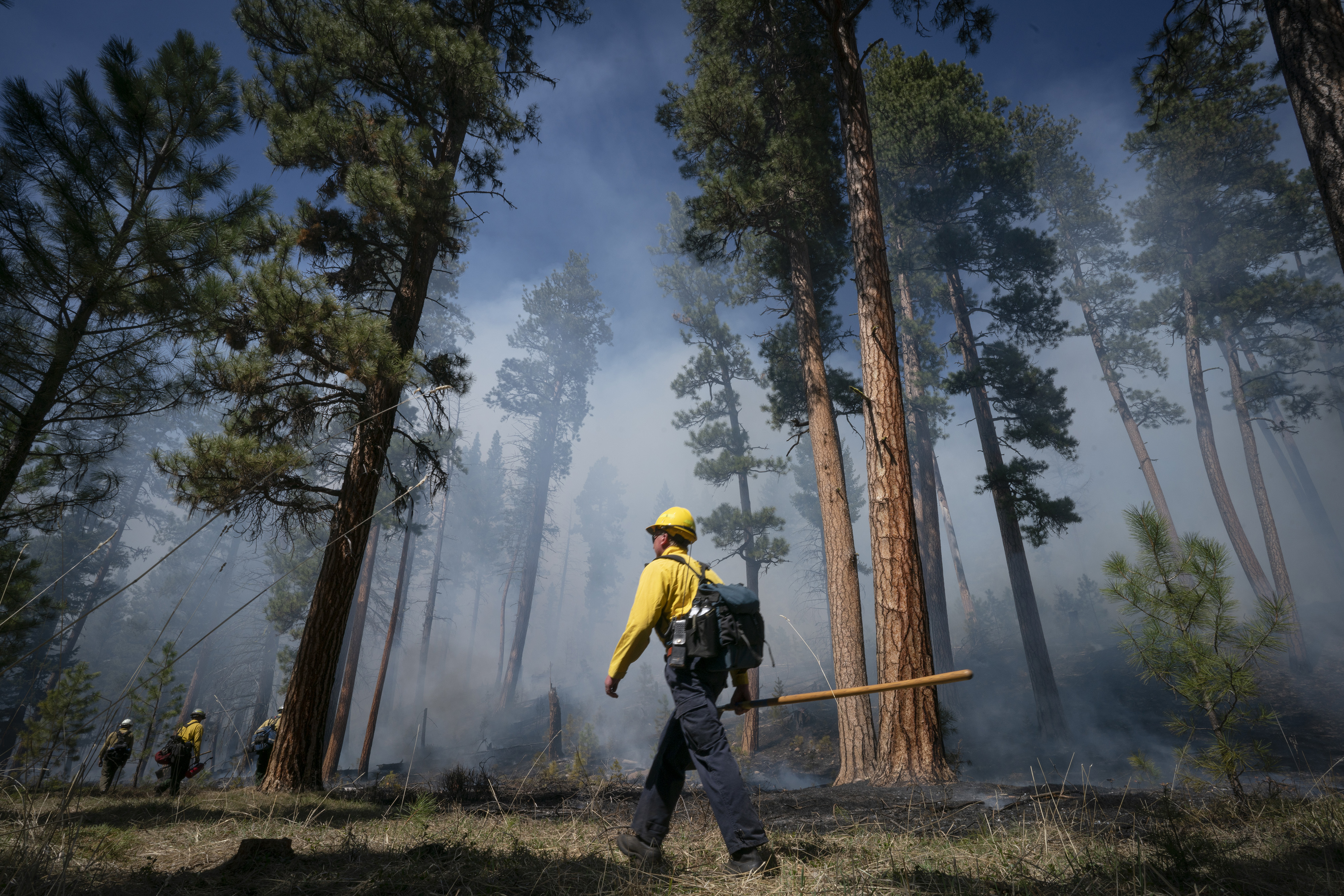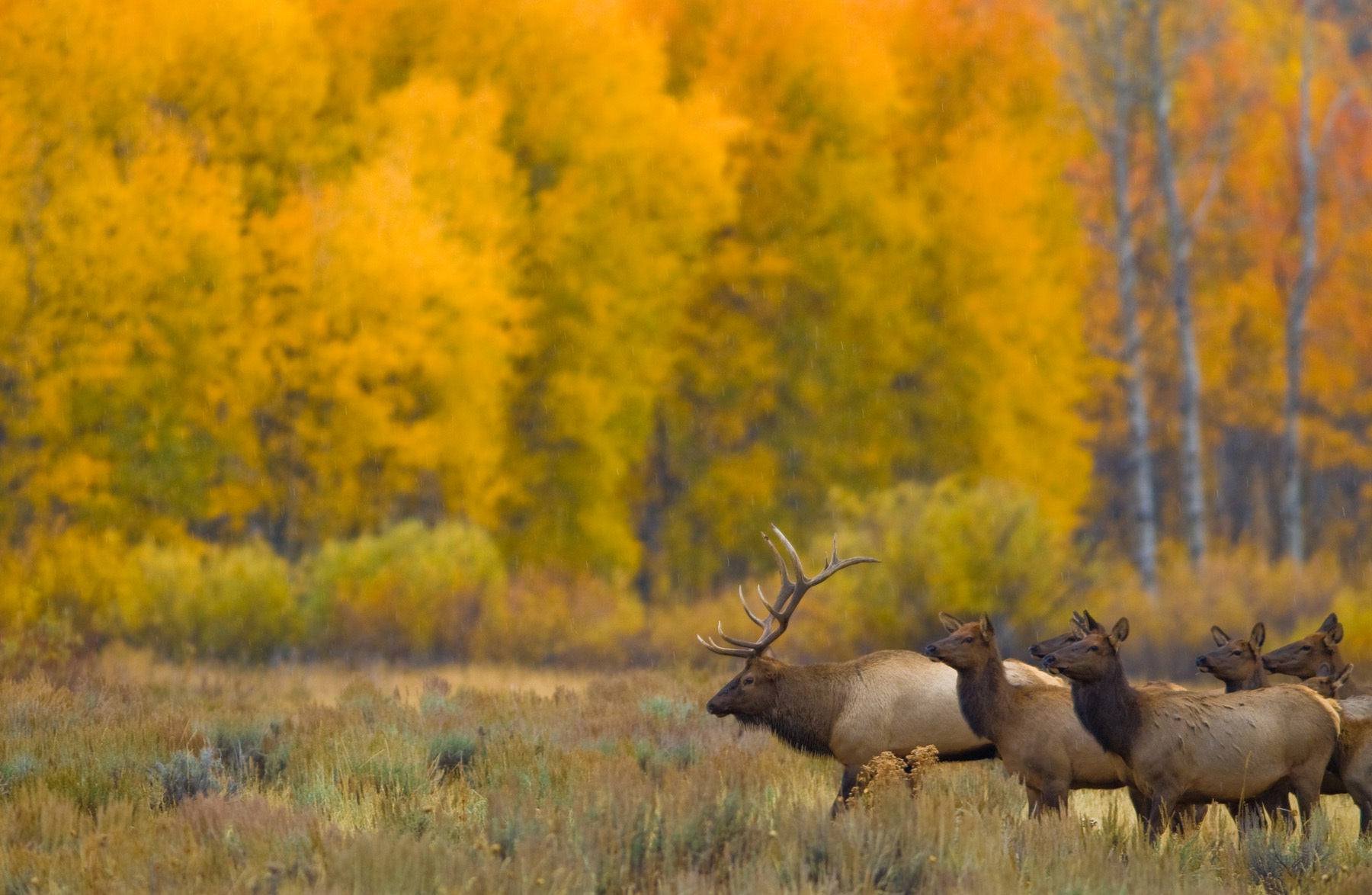The Greater Yellowstone Needs You
In the face of accelerating development and climate change, we have just years, not decades, to take action for the Greater Yellowstone. Together, we can ensure that future generations will experience an ecosystem as wild and extraordinary as it is today.

A Place Like No Other
The Greater Yellowstone Ecosystem is so iconic that it inspired the world to protect nature for future generations. Its namesake national park was the first of its kind, anywhere on Earth. Yet only a small fraction of the Greater Yellowstone is protected by the national parks at its core.
Almost 90% of this 22-million-acre landscape, which spans Wyoming, Idaho and Montana, lies outside the parks as a patchwork of private and public lands. It remains mostly intact—for now.
But as the region’s natural beauty attracts ever more people, the Greater Yellowstone is under threat from development. Bison, elk, native trout and other wildlife need large areas of connected habitat for their seasonal migrations, and the explosive growth of new construction is interfering with some of the longest intact migration routes in North America. In addition, as climate change creates hotter, drier conditions that put further pressure on wildlife habitat, it is increasingly urgent that we protect one of the world’s most intact and connected ecosystems. If protected, the Greater Yellowstone will serve as a high-elevation stronghold for fish, wildlife and native plants.

Meeting the Challenge
A landscape this vast and complex requires solutions that match the scale of the challenge. With your support and commitment, we can safeguard the future of the Greater Yellowstone’s world-renowned wildlife, extensive forests, sagebrush habitat and trout-rich rivers. But we must act now, while there’s still time.
The Nature Conservancy is the world leader in large-landscape conservation, working in partnership with private landowners, government agencies and other collaborators to get things done. We have more than seven decades’ experience working around the world to protect the planet’s most iconic natural landscapes. Even more importantly, we have decades of experience working right here, alongside ranchers, agency partners and many other people who call the Greater Yellowstone home. Our solutions are welcomed by local communities because they benefit both people and nature.
We succeed because:
- We work across boundaries. Nature isn’t bound by a fence line, and neither are we. The Nature Conservancy has the legal and government expertise to navigate local, state, federal and Tribal policies, leading cohesive conservation strategies that work seamlessly across a landscape.
- We can prove success with world-class science and tools that have been put to the test. Our partners rely on our ability to target the most important places with the most impactful work.
- We bring global expertise to a local challenge. Our deep bench of conservation scientists, land protection specialists and policy experts bring experience from working in similarly complex landscapes across the world to illuminate our path forward in the Greater Yellowstone.
By supporting The Nature Conservancy, you are leveraging the world’s largest conservation organization to achieve our shared vision of a thriving ecosystem.
Our Plan for the Greater Yellowstone’s Future
The Nature Conservancy is working right now to forge a healthy future for the ecosystem’s extraordinary wildlife, water, forests and sagebrush habitat. Explore each topic below for examples of our boots-on-the-ground work in Wyoming, Montana and Idaho, as well as stronger-together partnerships with communities, agencies and individuals who care for the Greater Yellowstone’s lands and waters. Together, we find a way.
Protect Migrating Wildlife
We ensure that the Greater Yellowstone’s iconic wildlife thrive by keeping landscapes whole and protecting both summer and winter ranges. We do this by:
- Offering ranchers practical alternatives to barbed-wire fences, so they can keep their livestock contained on pasture lands while keeping elk, moose and other wildlife safe from entanglements. We teach landowners how to modify existing fences to make them safer and implement innovative new solutions such as virtual fencing.
- Providing crucial science to policymakers and developers so they can plan new roads, construction and energy infrastructure with wildlife corridors in mind. Our smart siting work can avoid development in crucial wildlife habitat and save lives by reducing wildlife-vehicle collisions.
- Supporting Indigenous Peoples’ efforts to return buffalo and other wildlife populations to their reservation lands as well as ancestral territories. We also support their efforts to reclaim traditional hunting practices and reclaim food sovereignty for their communities.
- Strategically and permanently protecting ecologically significant lands within the Greater Yellowstone Ecosystem. We do this by acquiring lands that are under intense pressure from development, such as Idaho’s H Bar L Ranch—a crucial migration corridor for Yellowstone’s wildlife and vital habitat that supports peregrine falcons, pronghorn, eagles, grizzly bears and cutthroat trout.

Conserve Waters and Secure the Water Supply
As the region’s once-heavy snows become less reliable and melt more quickly, The Nature Conservancy is working to ensure that people and nature have sufficient water. We do this by:
- Advancing water conservation science and policy to help the region’s water users adapt to a drier future with uncertain water supplies.
- Restoring degraded streams and wetlands by building cost-effective stream structures, with natural materials, to reduce runoff and erosion. We also restore natural catchments like wet meadows that help water sink into the earth, replenishing groundwater supplies.

Save Wild and Working Sagebrush Lands
The Greater Yellowstone’s rolling hills of silvery sage, punctuated by the shapes of pronghorn, sage-grouse, cattle and cowboys, are emblematic of the West. This “Sagebrush Sea” is as iconic to our continent as the Serengeti is to Africa or the Amazon is to South America. And it is also one of our planet’s most threatened natural habitats, under attack by a devastating combination of development pressure, wildfire and climate change. The Nature Conservancy is fighting for the future of the Sagebrush Sea. We do this by:
- Halting the expansion of fir and juniper trees into sagebrush habitat. After a century of fire suppression, trees are crowding out sagebrush and threatening vital wildlife habitat. In Montana, for example, a special employment program hires crews from local communities to remove encroaching trees.
- Protecting the healthiest remaining sagebrush habitats from encroaching development by supporting land protection agreements on private lands. These legal agreements offer willing landowners a way to ensure that their land remains protected for nature and agriculture forever.
- Building a supply of native wildflower seeds and developing the knowledge and technological advances to get seeds to grow. Our scientists in Wyoming are developing strategies to supply native plants to agencies and landowners who are working to restore degraded land.

Restore Forests to Health
As climate change fuels hotter, drier summers, The Nature Conservancy is working to reduce the risk of severe wildfire in forests, keep carbon sequestered in living trees and protect forests’ ability to hold snow and supply freshwater for all of us downstream. We do this by:
- Conducting controlled burns and forest thinning projects to reduce the dry tinder that can trigger catastrophic wildfires. Our fire professionals conduct controlled burns in collaboration with the U.S. Forest Service, Tribes and other partners who are committed to rehabilitating our forests.
- Revitalizing forests so they can capture more snowmelt and deliver it as a consistent water supply for people and nature downstream. In Wyoming, for instance, we are conducting cutting-edge snow research to understand how forest management can help forests retain snow and release it more gradually into streams and rivers.
Together, We Can Protect the Greater Yellowstone
We invite you to stand with us to protect this landscape we love. Learn more about how you can join us and take action to conserve the Greater Yellowstone for future generations.

Program Overview
Protecting Clean Water
The Greater Yellowstone is the source of seven major rivers and an average of 4 trillion gallons of freshwater, which helps “water the West” so that people and nature thrive.

Places We Protect
Visit Flat Ranch Preserve
Located 15 miles west of West Yellowstone, The Nature Conservancy’s Flat Ranch offers a great place to view wildlife before entering Yellowstone National Park.

Feature
Sustaining Wyoming’s Migratory Herds
Scientists study migration in Greater Yellowstone Ecosytem.

Places We Protect
High Divide Headwaters
In the Greater Yellowstone’s northwest corner, Montana’s ranching legacy meets a sagebrush landscape rich with wildlife.

Feature
Coaxing Secrets from Wyoming’s Sagebrush Sea
Native plants are tricky to sprout, finicky to grow—and the key to saving sagebrush habitat in the Greater Yellowstone and beyond.
Greater Yellowstone's Natural Wonders










